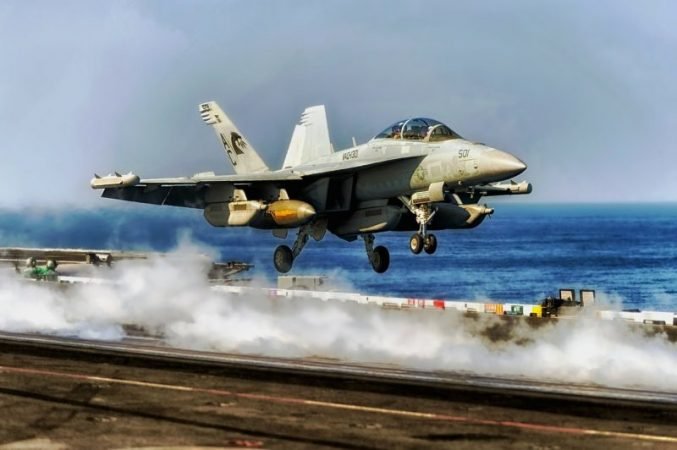The United States and China: Examining the Contours in the South China Sea

The United States-China confrontation has been through the roof for the past few months. Both have a competitive advantage over the other; these advantages however get varied by circumstances. The maritime hegemony is the reason for endless fights in the South China Sea where the two greatest economies are confronting in a much tensed geopolitical environment. Trump’s use of the “China Virus” while referring to COVID-19, and China’s controversial stand on majorly three postures- the Sino-India border, Hong Kong, and the Consulate confrontation between the US and China. This doesn’t end here. The United States’ firm stand against Chinese mobile applications, most importantly the TikTok, has contributed awfully to upgrade the level of a new confronting the South China Sea. In this article, the author tries to explain what the recent military drills by the USA in the South China Sea (“SCS”) entails for diplomatic corridors in countries that get the benefit from the lucrative trade in the SCS. Also, how far does a military catastrophe is palpable would be the central theme of this article.

Understand the Status Quo
In June, Japan and the US had joint military drills in SCS. The US then deployed the USS Nimitz and USS Ronald Raegan in the region. This naturally incensed China that complained about this needless presence out on Twitter. These petty objections were too dull to confront the US which felt it is necessary to uphold the “freedom of navigation” in SCS. In August, China also augmented the drills around East Asia and started a “war of words” against the U.S. When the US’ health minister reached Taiwan, experts started believing that the war is no more on papers now. Taiwan is one of those many things that China regards under its sovereignty. This naturally angered China which called it a “breach of commitments” on Taiwan. Although, “commitments” have always been breached mutually and this phrase no more seems impressive. China urged the US to abide by the One-China principle and respect the communique signed between both the nations. China didn’t stop there. It started sending its warplanes towards Taiwan. The Taiwan Strait median line, the line that separates Beijing from Taipei, was crossed by these planes. According to treaties signed, China should not cross the median line. However, this “commitment” too had been broken multiple times before by China. This time the warning from China was clear and solemn- If the US goes further, the People’s Liberation Army (PLA) could take countermeasures. What these countermeasures could be is a matter of general understanding. As some analysts pointed out that “It is apparent from the increasing complexity of China’s maritime exercise that they are up to something….” One interesting thing in this whole affair was the role of the media. Chinese media, as always, did its best to use aggressive rhetoric against any US move. This time the US media too, gaining succor from shared anger against China due to the pandemic, used its spread and eloquence to defend the nation’s approach.

Analyzing the contours of an impending War
There is a warlike situation: whether a trade war or a war on borders. Trade wars are not a novel thing in an economically competitive world; especially when it is between the two greatest economies. A “real” war however is appalling. In the present situation, when the global recession is looming, no one wants to make it nastiest. War is a far-fetched idea, however certain qualms are tangible, and these are:
- As Global Times writes that “under constant provocations from the US, China will have no choice but to upgrade its countermeasures” and the US too would then resort to “more dangerous military tactics”.
- Allies in this situation will become the greatest strategic factor. China is reportedly fearful of the US due to its major allies in the region. This could have been the reason that China didn’t want to offend Vietnam and the Philippines on the contentious issue of the Nine-Dash Line and instead offered negotiations.
- Global pandemic and universal isolationism could lay new floors for protectionist economics which would invariably change the global economic order and consequently, the geopolitical factors around SCS too would transform.
- Japan again would play the biggest role as. US ally and would be a major strategic factor that China should think of before pushing against the US. Japan can do immense damage to China in the waters. India could also make a major difference given its geographical advantages.

Conclusion
Both China and the United States want to maintain, or at least exhibit, their ascendancy in the SCS. The post-pandemic period would not be the same. The US needs South East Asia and vice-versa. China too wants to strengthen its diplomatic ties with Pakistan and Iran, a clear indication of buying strategic space against the US. This aggression may not lead to war but it is wrong to assume that such military drills do not serve any purpose. For the least, they do two things- either they open a dialogue or shut all doors of communication. Optimistically, the current situation may lead to the former one. Setting aside all the factors, Hu Bo writes that “if there were to be war, it would be the front-line commanders and sailors who bear the brunt of it”. This is true or at least relieving to say that Cold wars are always better than bullets on borders. In this case, a “normal” world, and especially an America after the elections, would definitely play a major part.



















